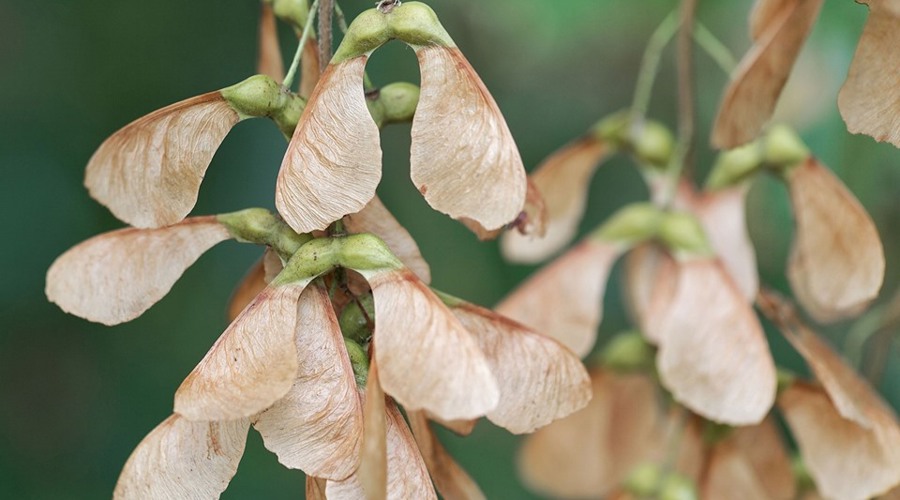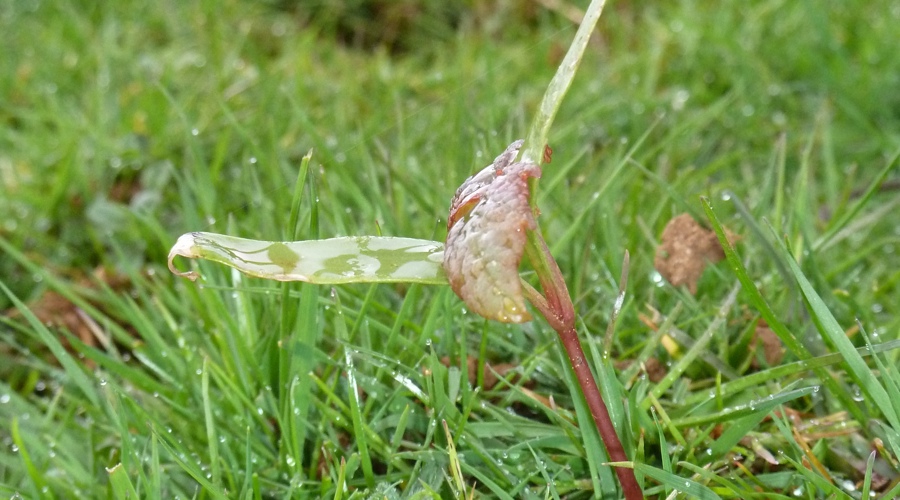Sycamore material has been found, in varying concentrations, to contain a substance called Hypoglycin-A (HGA). When eaten, HGA is converted into a toxin within the horse’s body. The toxin has a rapid negative effect and can slow or even stop energy production in the horse’s muscle fibres.
Most cases of AM occur during the autumn when seeds dropped on the pasture are eaten, or during the spring when the sycamore seedlings are growing.
Atypical Myopathy can affect individual horses or several horses within the same group. It is currently unknown why some horses remain unaffected by HGA and others develop life threatening AM.
Signs
The onset of AM is rapid, and horses can quickly deteriorate within 6-12 hours. The prognosis for the horse is often poor with mortality rates around 56-61%2.
Signs include:
- Muscle stiffness
- Muscle tremors
- Sweating
- High heart rate
- Depressed with their head hung low
- Brown or dark red urine
- Weakness, struggling or reluctance to walk and/or have difficulty standing
- Breathing difficulties
Treatment
Seek urgent veterinary assistance if you are concerned about your horse.
Prevention
Seeds
chevron-down
chevron-up
During autumn, owners should try and reduce the risk of their horses consuming sycamore seeds by clearing them from the pasture regularly.
We urge all horse owners to be vigilant and watch out for seeds, as even paddocks free of sycamore trees may still be at risk from seeds being blown onto the pasture.
Seedlings
chevron-down
chevron-up
Mowing could potentially decrease the risk due to reducing the amount of toxic material available to eat (but the mowed grass and seedlings must be collected and not left on the pasture). However, by leaving the root in the ground seedlings are more likely to grow back and you may not be able to remove the whole of the seedling.
There are sprays available which kill off the seedlings however studies have found that the HGA toxin was still present in stored seedlings 6-8 months after being sprayed. Dependant on the toxicity level of the individual plant this could be longer. Even though the seedling has ‘died-off’, the left-over plant material still contains the HGA toxin, and therefore would still need to be removed from the pasture3.
Therefore, both mowing and spraying doesn’t eliminate the risk of poisoning and seedlings need to be removed from the pasture. Unfortunately, there is no easy method to remove the seedlings and it's understandable that the logistics, time and resources required to complete this presents a challenge for many horse owners.
Provide supplementary forage
chevron-down
chevron-up
Provide supplementary forage to horses on poorer grazing to help minimise the risk of them foraging for alternative food such as the seeds.
Feeding hay from the floor or close to sycamore trees can increase the risk of accidentally ingesting sycamore material, so hay feeders could help to prevent against this.
Pasture Management
chevron-down
chevron-up
In 64% of AM cases reported to the Atypical Myopathy Alert Group between 2006-2019, the pasture had minimal grazing1. Good pasture management is advised to help to reduce the risk of AM.
Be aware that the harrowing of pastures has found to increase the risk of AM. This practice may disperse the sycamore material throughout the pasture1.
HGA is a water-soluble toxin that may pass from plants to water through direct contact. For this reason, pastures that contain a natural water source, such as a river or stream, should not be used during the high-risk seasons and an alternative water supply should be provided1.
Pastures contaminated with sycamore material should not be used to produce hay, haylage or silage as research has found that seeds and seedlings present in bales after 6-8 months storage still contained amounts of HGA3.
Management of Grazing Time
chevron-down
chevron-up
The length of exposure to the toxins appears to play a role in the risk of AM. Where sycamore trees are present near horse’s pasture, it is recommended to limit grazing time to less than six hours a day1.
Testing for HGA
chevron-down
chevron-up
HGA levels can differ between individual sycamore trees possibly due to the time of year or due to different climatic conditions; however, we are unsure to the reason why and risk factors have not yet been confirmed, but research is on-going.
There is a test available from the Comparative Neuromuscular Diseases Laboratory at the Royal Veterinary College for the testing of seeds and seedlings for HGA; further details are available from The Royal Veterinary College website.


Further reading
References
chevron-down
chevron-up
1. Votion D-M et al. (2020) Frequently Asked Questions Regarding Horse Feeding and Management Practices to Reduce the Risk of Atypical Myopathy. Animals 10, 365.
2. Dunkel B et al. (2018) Atypical myopathy in the South-East of England: Clinicopathological data and outcome in hospitalised horses. Equine Veterinary Education 32, 2.
3. González-Medina S et al. (2019) Atypical myopathy-associated hypoglycin A toxin remains in sycamore seedlings despite mowing, herbicidal spraying or storage in hay and silage. Equine Veterinary Journal 0 pg.1-4.



